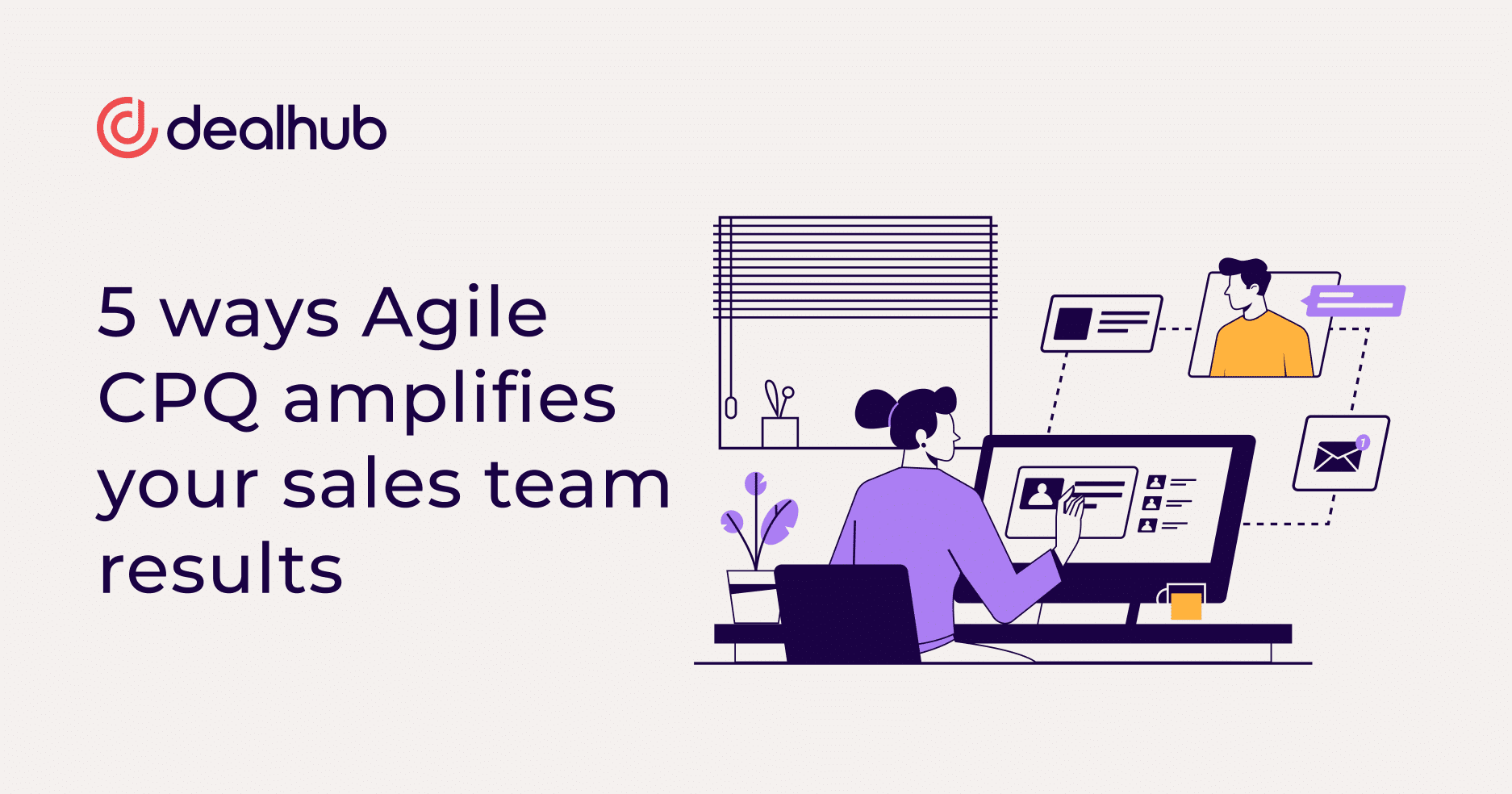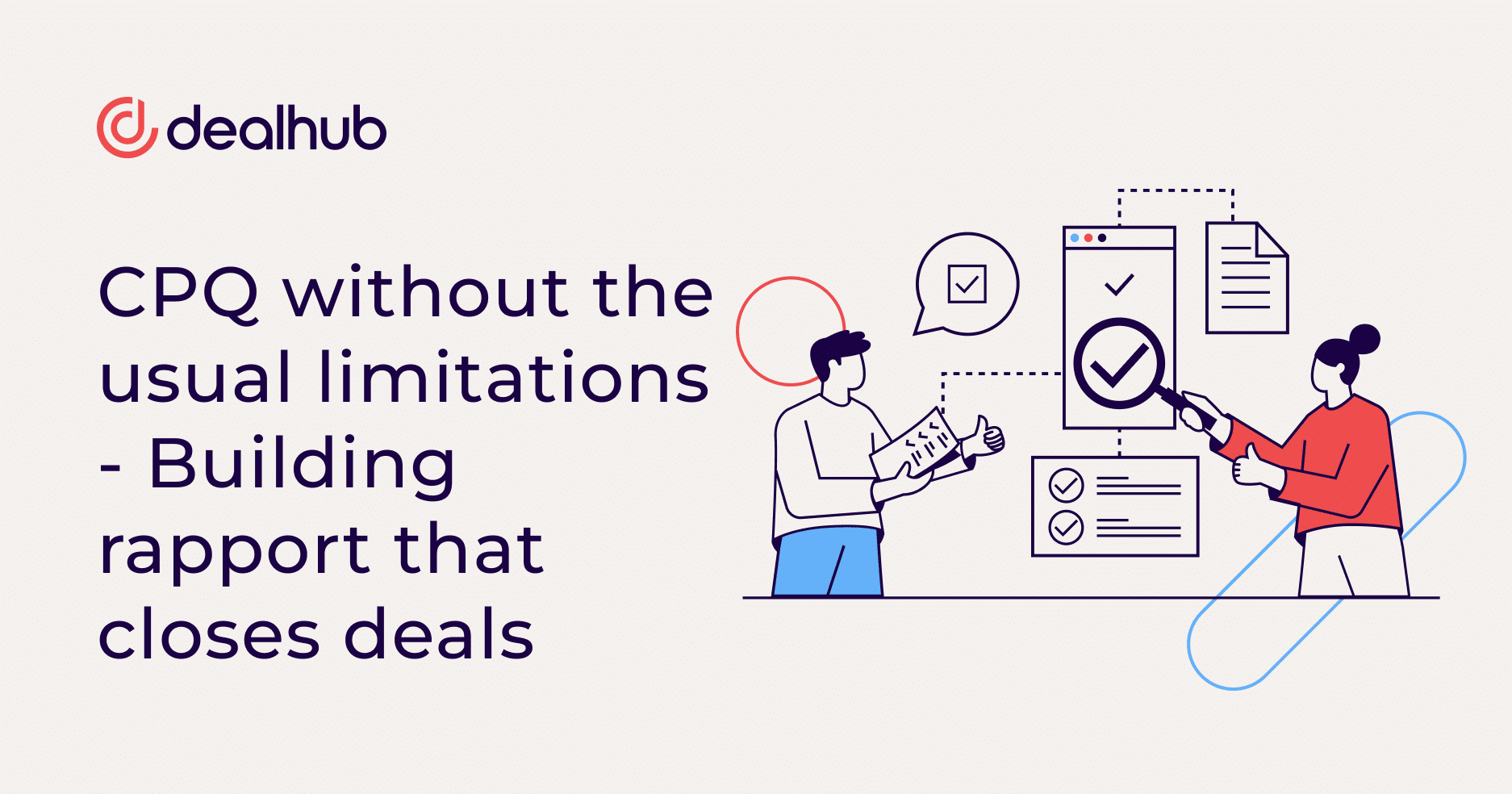Last week we hosted an expert panel to provide Deal Desk professionals with some insight and inspiration into running more efficient operations. Moderator Steven Chung, the founder of the Deal Desk Association, chatted with Katie Zinman, Global Director of Deal Desk at Braze, Bruce Harris, Director of Finance Applications at Torchy’s Tacos, and Eyal Orgil, Chief Revenue Officer at DealHub to discuss just that.
Here are the main takeaways from that panel of pros.
- Process efficiency via dynamic playbooks
- Agile pricing and operational efficiency
- Revenue efficiency through automated approval workflows
- Communication, collaboration, and control
Process Efficiency via Dynamic Playbooks
Deal Desks have changed the way high-value deals are managed in sales organizations, igniting the need to make the experience more self-sufficient at an organizational level. As a result, improving sales velocity and reducing errors have become key drivers in building seamless customer experiences that are both user-friendly and flexible.
Deal Desk teams now have more tech solutions designed to support their function, with Agile CPQ as the cornerstone of innovative sales success.
Using the right CPQ is the first touchpoint, setting the pace for the process from the very beginning.
Keeping pricing and product current provides a solid start to the process. Using guided selling playbooks, which are easy to use and manage, enhances the fluidity of the deal, and reduces the need for Deal Desk intervention, contributing to its efficiency.
Agile Pricing and Operational Efficiency
Sales success is often linked to process efficiency. Organizations are tasked with finding the right solution, not simply acquiring a tool and hoping for the best.
For any tool to be effective, it needs to be used. According to Eyal Orgil, that adoption rate needs to be at 100% or as close to it as possible. He classifies the project as a failure if not achieved.
The purpose of establishing a Deal Desk and implementing an Agile CPQ is to give value to the organization while intuitively empowering sales teams to lead customers to the dotted line. It is essential that the tool is working for those who are using it.
Quickly moving beyond a rigid pricing structure to a customizable and flexible model tailored to individual customers’ needs is a win-win for all parties involved. This makes having guardrails and control a high priority. If governance over these processes falls short, conversion rates are sure to be less than optimal.
Revenue Efficiency through Automated Approval Workflows
Many organizations are currently struggling with sales turnover on account of the uncertain economic climate. While taking this into account, in many organizations, the real cause for revenue inefficiency is a knowledge gap around structuring deals. This gap can be bridged by proper training for determining packages or product compatibility that creates sales opportunities.
Agile CPQ is the technical bridge between product knowledge and sales with guided selling.
Katie Zinman gives an example: “If I buy product A, I must buy product A’s service or corresponding service validation rules that will only allow salespeople in a certain segment to sell a certain product. And this is all done in the system. So you don’t even see what you don’t need to see.”
This is key with regard to pricing tools and playbooks that conditionally hide or show information according to what is relevant. The same goes for managing and maintaining a productive confluence page for both sales and internal Deal Desk teams with streamlined workflows around policy updates, compliance, and more.
Organizations that provide genuine onboarding to their sales teams have reported seeing 85% of them achieving top-performer status in under a year. Leveraging an LMS or Learning Management System as part of the onboarding process for new sales hires is an effective way to educate on product and pricing structures, talk tracks, and explanations of how and when to sell the product. As the old adage goes “the more you know the better”. And according to Katie “Onboarding documentation, CPQ chef’s kiss.”
Communication, Collaboration, and Control
Successful organizations prioritize empowering their sales reps to communicate value beyond products to prospective customers, rather than simply presenting an inventory. When sales rely solely on selecting products over including added value, they create revenue leakage.
“This can happen anywhere from four products to 500 products to organizations with over 6000 products,” says Bruce Harris. He’s not alone in thinking this. According to a survey led by Boston Consulting Group, 45% of executives view revenue leakage as a systematic issue for their organizations.
This is where having a true guided quoting playbook is paramount in aligning sales teams at a fundamental level. It also reduces inefficiencies and turnaround time, enabling sales to ramp up their efforts and focus on selling the right product at the right time according to what has been previously agreed upon.
The subject of communication, collaboration, and control also feeds back into the idea of better onboarding structures that educate salespeople at ground level allowing for accelerated ramp-up speeds. It also reinforces the empowerment of salespeople in reducing the Deal Desk burden through Agile CPQ.
Deal desks handle multiple deals at any given time, working as a mediator between sales and clients. By setting guardrails in place, and giving sales the transparency and control to build the right solutions, a lot of extra work is taken away from the Deal Desk leading to a much smoother flow. That relates to products and pricing and, of course, to contracts.
83% of professionals depend on technology for collaboration, and with good reason. Having a mechanism in place that is agile, with the ability to manage, review, and audit is important to the collaborative processes. Organizations need a single source of truth to ensure all stakeholders are using the right processes, pricing, and versions.
This is especially true for approval processes and putting the right controls in place. Organizations are now able to adapt to changes without the hassle and downtime of having to train or reeducate sales teams. Automated approval workflows keep all sides of a deal informed and current. No more chasing after signatures or trying to trace the latest version of an agreement. This makes the process more visible and transparent, and more efficiently manageable for Deal Desks.
Measuring the Success of Deal Desk Efficiency
Measuring the success of process efficiency with guided selling playbooks is crucial to future-proofing business success. It’s all about predictable, consistent results. And this is where having a strong analytical engine holds key insights into what is truly going on. Having rich and consistent data, organizations can see patterns forming, without relying on assumptions and intuition. Understanding the structures of what’s winning and where shortfalls lie based on consistent data input is gold.
A Deal Desk supported by an Agile CPQ has the power to generate greater efficiency, speed, and transparency across go-to-market teams. It feeds into the bottom line of any organization.




